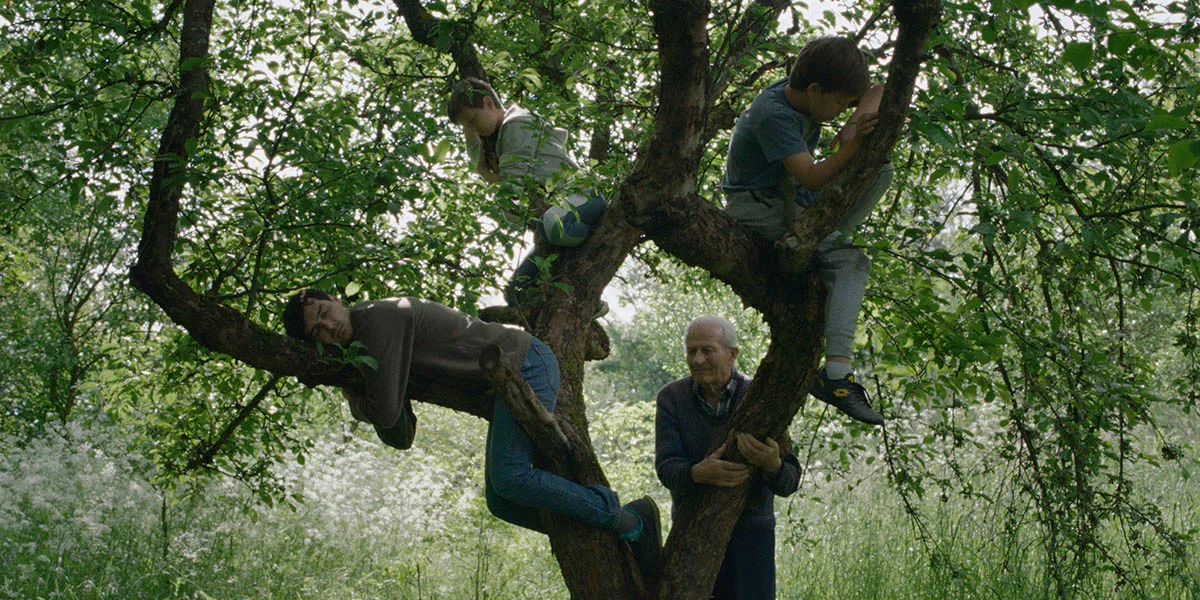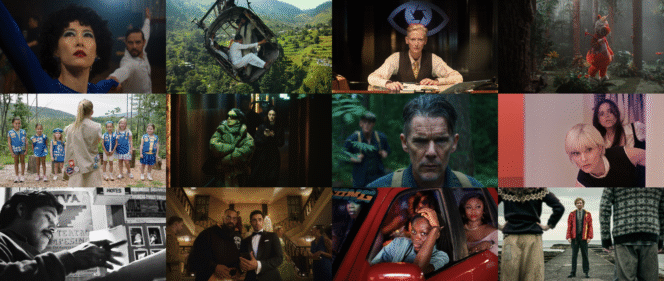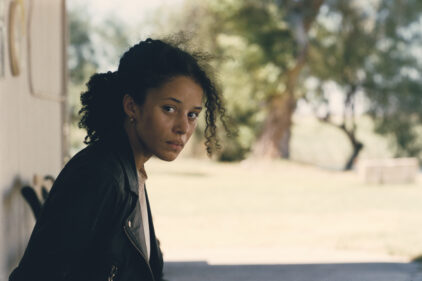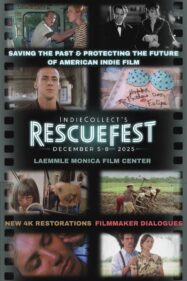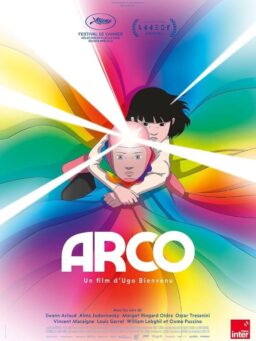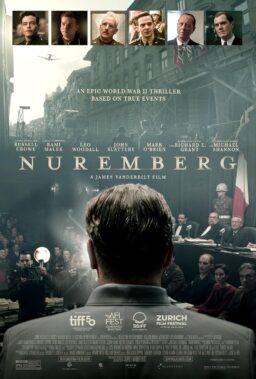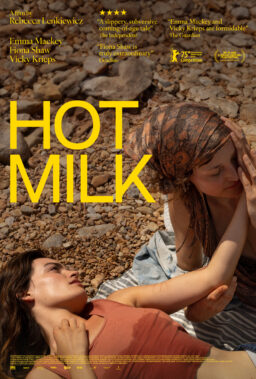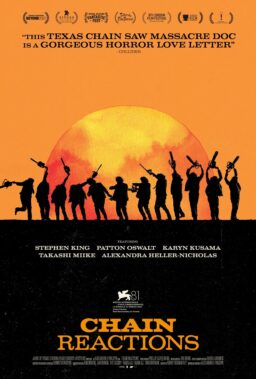“Atmospheric” and “measured” are the two words that describe the three films composing this latest Chicago International Film Festival dispatch. All three works, hailing from the festival’s New Directors’ Competition, are films that consider loss and isolation in an unhurried manner. These sensorial works are also ambitious and assured, trusting the audience to accompany their stories on narrative paths whose emotional ends aren’t readily given; they’re earned.
A quietly moving film about grief, writer/director Stefan Djordjevic’s “Wind, Talk To Me” is an unassuming hybrid work that effortlessly blends documentary with fiction. It follows a mournful Djordjevic, who, while driving to visit his grandmother for her 80th birthday, accidentally hits a dog with his car. Eventually, Djordjevic will adopt this dog and name her Lija. That fictional element in this docudrama, however, is only a sliver of the film as a whole. Djordjevic is arriving at his grandparents’ home with a heavy heart: His mother, Negrica, recently passed away, and he hopes to complete the real film he was making about her.
Without warning, Djordjevic’s film navigates into the past, becoming several films within a film. The first involves the documentary footage Djordjevic is presently shooting of his family climbing trees, luxuriating in their rural spaces, and completing a lake house. The second film is composed of previously shot footage of Djordjevic’s mother, including the holistic treatment she underwent and her many musings about how humans can control the wind. The majority of “Wind, Talk To Me,” therefore, is Djordjevic using these two elements—his therapeutic relationship with Lija—to process his loss.
In his meditations, nature becomes its own character. A close-up captures Djordjevic’s hand rubbing the tree bark, creating a sound akin to crumbling, charred tissue paper. In other moments, the wind and leaves whisper with soulful intensity. The film’s DP Marko Brdar is especially attuned to the sensorial environment, enveloping us in its majesty and solemnity with soft precision. And while “Wind, Talk To Me” can be knowingly distant, juxtaposing Djordjevic’s lonely heart to the intimacy of family life, the docudrama is never too cute nor too vague. By the end, we fully grasp the necessity of holding and cherishing every moment with a loved one, and of seizing opportunities to commune with them.
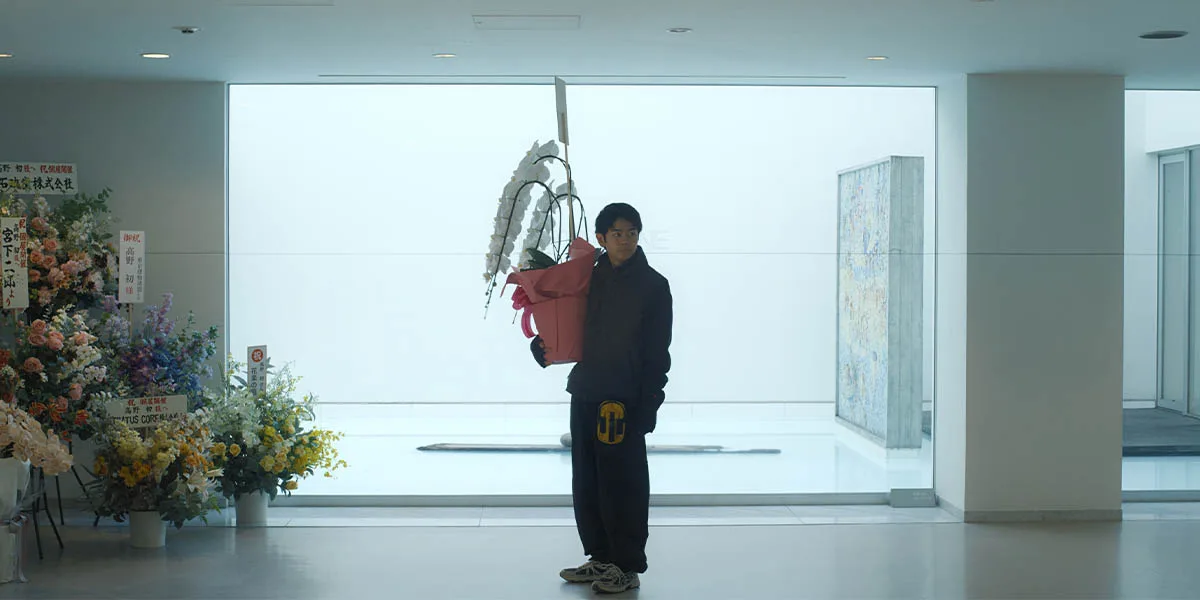
While I wouldn’t necessarily call “Brand New Landscape,” writer/director Yuiga Danzuka’s melancholic debut feature, slow cinema, it’s undoubtedly an unhurried rumination. It starts with a family of four who’ve arrived at a vacation home for the weekend when their selfish architect father Hajime (Kenichi Endo) asks his wife if he can immediately depart to take on a job. The brazenness Tanakao displays as he slowly dismisses his wife’s many counterarguments, until he wears her down into a fetal position, permanently changes his observant son. Fast forward ten years: His son Ren (Kodai Kurosaki) delivers flowers, and his daughter Emi (Mai Kiryû) is preparing to be married.
Danzuka’s film doesn’t readily turn to melodrama. Ren is such a quiet spectator; when Emi tells him about her impending marriage, he can barely mumble “congratulations.” It’s not until he discovers a floral arrangement addressed for his dad—who’s just returned to the country after working overseas for three years—that he becomes emotionally shaken. Emi, on the other hand, declares that she doesn’t really care about their dad anymore. But as she advances closer and closer into her move on date with her fiancé, we see how much her father’s abandonment has affected her, too. This tricky dynamic between these three characters holds much of “Brand New Landscape” together, especially as the film shifts into phantasmagorical territory.
“Brand New Landscape” becomes shakier, however, when Danzuka moves away from the narrative’s family drama to critique the soulless new structures dotting Tokyo. While he tries to parallel his aesthetic disgust with the film’s condemnation of Hajime—the character’s most famous project is a vapid megamall that required the government to clear the houseless from the land to build—his interrogation remains too far on the edges of the film to fully succeed. That failing, thankfully, can easily be chalked up to first-time filmmaker issues. The character-based components of “Brand New Landscape” are so strong, it’s easy to ignore the faults in its foundation.
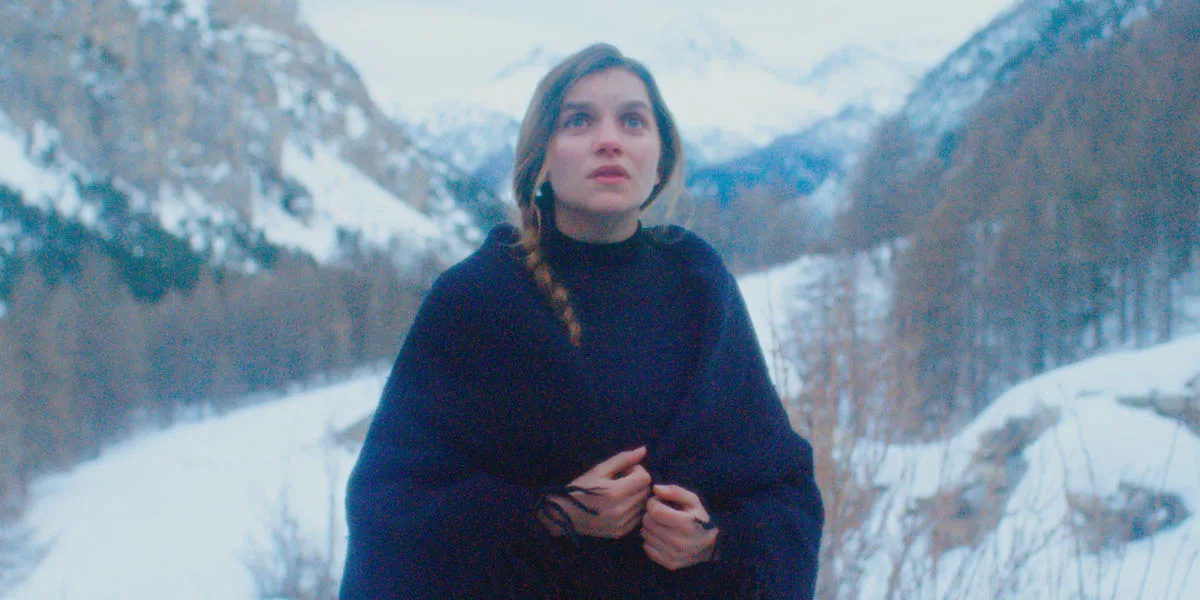
Louise Hémon’s hypnotic and sumptuous “The Girl in the Snow” uses the arrival of French teacher Aimée Lazare (Galatéa Bellugi) in 1899 to critique the customs, homophobia, and female sexual repression of a small snowbound Hautes-Alpes village. A lowlander, Aimée has arrived in this mountainous setting with nary a clue about the local beliefs. When she attempts to teach the children what a cow sounds like, they correct her, saying a cow makes a “broo broo” call rather than a “moo” sound. When she attempts to give two of her students a bath, the elderly woman scolds her: in her mind, the kids need crust on their heads to protect their brains. Worst yet for this very horny protagonist, she becomes attracted to the local men—Pépin (Samuel Kircher) and Enoch (Matthieu Lucci)—while ignoring the infatuation displayed by the quiet stableboy Daniel (Oscar Pons).
With a prickly folkloric score, “The Girl in the Snow” becomes a supernatural tale that proposes a woman’s sensuality as a kind of malevolent spirit. Homosexuality is similarly pitched as a desire that must be hidden away, often in caves, lest it upset the “natural” balance of the village. The more these appetites are hidden, of course, the greater angst and trouble they inspire within this tiny hamlet that believes the mountain gives gifts and takes away people. Despite that tension, it would be a mistake to think Hémon’s film considers these modest folks small-minded. When Aimée writes down one of their oral stories, in French no less—the locals speak Occitan—the elders are incensed. Not only does Aimée not see how she’s erasing their language, thereby locking this amorphous tradition in a kind of colonized state. She also laments that all she wants to do is bring enlightenment to them.
With that want in mind, Hémon displays an enrapturing visual eye. The snowy, hilly landscape allows the director and her DP, Marine Atlan, to rely on negative space to visualize Aimée’s separation from the spirit of the land she inhabits and the ideas of the people who inhabit it. While the director and DP’s chiaroscuro shadows often recall the Dutch masters, their hallucinatory staging, which combines airy lighting with a kind of rural claustrophobia, deepens the haunting residue the film leaves. The effect is a startling directorial debut whose sense of place and mood become as timeless as a folktale.

